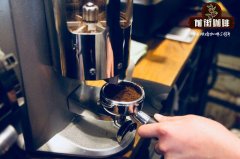Exquisite washing treatment of plum raisin-flavored coffee in Neri, Kenya

Professional coffee knowledge exchange more coffee bean information please follow the coffee workshop (Wechat official account cafe_style)
This coffee can be recognized at a glance as a masterpiece of Kenyan boutique coffee. Bright, perfect citrus aromas, lemon and limes with fresh tomatoes, cranberries, black tea and white grapes, plus champagne bubbles. This is a first-class coffee, our only regret is that the quantity of this coffee is not large.
Part of the reason why this coffee is so exquisite is due to the fine classification and processing of producers. The essence of the Royal Coffee Red Cherry program is to encourage excellence. The extra time and labour invested in the selection of coffee cherries, the attention to detail in the washing and fermentation process, and the careful drying and sorting of coffee have all been rewarded, and the premium return has been returned directly to the local cooperatives engaged in the work.
Kamoini is one of about 20 cooperative treatment stations under the Osama Cooperation Organization of Nayeri County, taking the Ikamama River as the water source. Founded in 1987, about 600 members in the region provide their coffee cherries to Kamoini processing stations and process them on site. The three washing processes include flotation before fermentation and soaking after fermentation, and washing treatment. Then, KCCE (Kenya Coffee Export Cooperative) is responsible for drying and selling; KCCE is one of the few organizations in the Kenyan coffee industry that are owned and operated entirely by partner members from top to bottom.
Kamoini's position in Nyeri is perfect for growing coffee. The Aberdar Mountains / The Aberdares Mountains is located in central Kenya, just west of Mount Kenya.
The forested mountains also happen to be fertile soil for coffee and other crops, while coffee from Nyeri County in the west benefits from its unique ecosystem.
Raw bean analysis by Chris Kornman
Very similar to its counterparts, the Kamoini coffee only chooses 18-and 19-mesh coffee beans, which are equivalent to AA in the former colonial British coffee rating system. In addition to the exact number of items, this Kamoini coffee is very dense and probably requires a lot of heat in the early stage of roasting.
On a pro rata basis, growers in the Nyeri region-especially those who contribute to Kamoini-mainly grow SL28, a variety with low yield but high sensory potential, which was first selected from Tanzania in 1931. Coffee berry disease (CBD) remains a major problem in this part of the world. This is a highly transmissible fungal disease, and just like leaf rust, coffee research focuses on cultivating resistance. Ruiru 11 entered the market as a complex F1 hybrid, and recently, the high-yielding and early-maturing Batian variety / Batian variety (essentially Ruiru 11 of F5 backcross, which contains less Sarchimor gene) has been provided to farmers as a solution to coffee berry disease (CBD).
Kenya nyeri kamoini
Triple washed
1824m
Flavor: plums, raisins, sweet finish
Raw beans come from royal Company of the United States, which is the limited edition recommended by their taste room.
END
Important Notice :
前街咖啡 FrontStreet Coffee has moved to new addredd:
FrontStreet Coffee Address: 315,Donghua East Road,GuangZhou
Tel:020 38364473
- Prev

Introduction to the flavor of Mantenin treatment of black diamond gold in Jiayu, Sumatra, Indonesia
For more information on coffee beans, please follow the coffee workshop (Wechat official account cafe_style). Sumatran coffee, commonly known as Manning, comes from the Indonesian island of Sumatra, which is the second largest island in Indonesia and the sixth largest in the world, covering an area of 470000 square kilometers, which is 13 times the size of Taiwan! Sumatra is big, but not all of it produces coffee.
- Next

An Introduction to Anaerobic Solarization Treatment of the Native Species of Summer Rose in La Delas Estate, Colombia
Coffee came to Colombia in the late 18th century through Christian priests among Spanish colonists. The first coffee was planted in the northern provinces of Santander and Boyaca, and gradually spread to various regions of the country as a cash crop, but it was not until the end of the 19th century that it really took full possession.
Related
- Detailed explanation of Jadeite planting Land in Panamanian Jadeite Manor introduction to the grading system of Jadeite competitive bidding, Red bid, Green bid and Rose Summer
- Story of Coffee planting in Brenka region of Costa Rica Stonehenge Manor anaerobic heavy honey treatment of flavor mouth
- What's on the barrel of Blue Mountain Coffee beans?
- Can American coffee also pull flowers? How to use hot American style to pull out a good-looking pattern?
- Can you make a cold extract with coffee beans? What is the right proportion for cold-extracted coffee formula?
- Indonesian PWN Gold Mandrine Coffee Origin Features Flavor How to Chong? Mandolin coffee is American.
- A brief introduction to the flavor characteristics of Brazilian yellow bourbon coffee beans
- What is the effect of different water quality on the flavor of cold-extracted coffee? What kind of water is best for brewing coffee?
- Why do you think of Rose Summer whenever you mention Panamanian coffee?
- Introduction to the characteristics of authentic blue mountain coffee bean producing areas? What is the CIB Coffee Authority in Jamaica?

